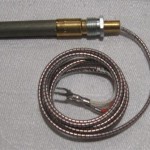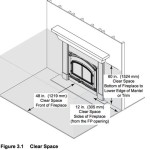Fireproof Gloves For Fireplace: Ensuring Safety and Comfort
Fireplaces offer warmth and ambiance, creating a focal point in homes. However, managing a fireplace safely requires more than just knowing how to build a fire. Protecting hands from burns and heat exposure is paramount. Fireproof gloves designed specifically for fireplace use offer a crucial layer of defense, allowing users to handle logs, adjust grates, and tend to the fire with confidence and security. This article explores the features, materials, and considerations involved in selecting appropriate fireproof gloves for fireplace maintenance.
Understanding Heat Resistance and Fireproof Terminology
The term “fireproof” is often used loosely. In reality, no material is truly impervious to fire indefinitely. Instead, materials are considered "fire-resistant" or "heat-resistant," possessing the ability to withstand high temperatures for a specified duration. It's important to understand this distinction when evaluating gloves for fireplace use. Fireproof gloves for fireplaces are designed to protect hands from radiant heat, direct flame exposure for brief periods, and hot embers or surfaces. The level of protection offered depends on the materials used in their construction and the manufacturing standards to which they adhere.
Heat resistance is measured using various standards and testing methods. One common metric is the temperature rating, which indicates the maximum temperature the gloves can withstand without causing burns or discomfort. It's crucial to select gloves with a temperature rating that exceeds the expected heat exposure from the fireplace. For instance, handling hot logs can expose gloves to temperatures ranging from 300°F to 500°F (149°C to 260°C), depending on the type of wood and the intensity of the fire. Gloves intended for fireplace use should ideally offer protection beyond this range to provide a safety margin.
Furthermore, the duration of heat resistance is a significant factor. Gloves might withstand a high temperature for a few seconds but degrade rapidly with prolonged exposure. This is particularly relevant when adjusting logs in the fire or handling hot tools for an extended period. Look for gloves that specify the time they can maintain their protective properties at a given temperature.
It is vital to distinguish between heat resistance and cut resistance. While some fireproof gloves might offer a degree of protection against cuts from sharp edges, their primary function is to protect against heat. If handling wood with splinters or sharp objects is a frequent task, consider supplementing fireproof gloves with cut-resistant liners or opting for gloves designed with both heat and cut resistance features.
Material Selection for Fireplace Gloves: A Comparative Analysis
The choice of materials significantly impacts the heat resistance, durability, and dexterity of fireproof gloves. Several materials are commonly used in the construction of these gloves, each with its own advantages and limitations. An informed decision requires understanding the properties of these materials and their suitability for fireplace use.
Leather: Leather, particularly cowhide or goatskin, is a traditional and widely used material for fireproof gloves. Leather offers good abrasion resistance, protecting hands from scrapes and cuts. It also provides a degree of insulation against heat. Leather gloves are generally flexible and allow for reasonable dexterity, although they might become stiff with prolonged exposure to heat and moisture. The heat resistance of leather can be enhanced through tanning processes and the application of heat-resistant coatings. Leather gloves are typically a cost-effective option for general fireplace maintenance.
Aramid Fibers (e.g., Kevlar, Nomex): Aramid fibers are synthetic materials known for their exceptional heat resistance and strength. Kevlar, a well-known aramid fiber, is used in bulletproof vests and other protective equipment. Nomex is another aramid fiber often used in firefighting gear. Gloves made from aramid fibers offer superior protection against radiant heat and direct flame exposure compared to leather. They are also lightweight and flexible, allowing for good dexterity. Aramid fibers are inherently flame-resistant and do not melt or drip when exposed to high temperatures. However, aramid fibers can be more expensive than leather.
Silicone: Silicone is a synthetic rubber that offers excellent heat resistance and flexibility. Silicone gloves are often used in the kitchen for handling hot cookware. In fireplace gloves, silicone is typically used as a coating or a grip enhancer on leather or aramid fiber gloves. Silicone coatings provide added protection against radiant heat and improve the gloves' grip on logs and tools. Silicone is also water-resistant, preventing moisture from penetrating the gloves and reducing the risk of steam burns.
Aluminized Materials: Aluminized fabrics are made by coating a fabric with a thin layer of aluminum. This coating reflects radiant heat, providing exceptional protection against high temperatures. Aluminized gloves are often used in industrial settings where workers are exposed to intense heat sources, such as furnaces and foundries. While aluminized gloves offer superior heat protection, they can be bulky and less flexible than other types of gloves. They are also more expensive and might not be necessary for typical fireplace use.
Wool: Wool is a natural fiber that provides good insulation against heat and cold. Wool gloves are often used as liners in fireproof gloves to enhance comfort and insulation. Wool is also flame-resistant and can help to wick away moisture, keeping hands dry. However, wool is not as durable as other materials and can shrink or felt when exposed to high temperatures.
Key Features and Considerations When Selecting Fireplace Gloves
Beyond the materials used, several other features and considerations contribute to the overall performance and suitability of fireproof gloves for fireplace use. Evaluating these factors ensures that the chosen gloves provide adequate protection, comfort, and durability.
Glove Length: The length of the gloves is crucial for protecting the wrists and forearms from radiant heat and sparks. Shorter gloves might leave the wrists exposed, increasing the risk of burns. Longer gauntlet-style gloves extend further up the forearm, providing more comprehensive protection. The ideal glove length depends on the user's preferences and the type of fireplace being used. A minimum length of 14 inches is generally recommended for fireplace gloves.
Glove Fit and Dexterity: Gloves that are too large or too small can compromise safety and dexterity. Loose-fitting gloves can make it difficult to grip logs and tools securely, while tight-fitting gloves can restrict movement and cause discomfort. It is essential to choose gloves that fit snugly but allow for a full range of motion. Look for gloves with articulated fingers and palms for improved dexterity. Some gloves also feature adjustable wrist closures to ensure a secure and comfortable fit.
Stitching and Construction: The quality of the stitching and construction is crucial for the durability and integrity of the gloves. Look for gloves with reinforced seams and double stitching in high-stress areas. The stitching should be made from heat-resistant thread, such as Kevlar or Nomex, to prevent it from melting or breaking down when exposed to high temperatures. The gloves should also be free from any defects or imperfections that could compromise their protective properties.
Lining and Comfort: The lining of the gloves can significantly impact comfort and breathability. A comfortable lining can help to prevent overheating and sweating, especially during extended use. Common lining materials include cotton, wool, and moisture-wicking synthetic fabrics. Some gloves also feature padded palms and fingers for added comfort and protection.
Grip and Texture: A good grip is essential for safely handling logs and tools. Look for gloves with textured palms and fingers to enhance grip. Silicone coatings, embossed patterns, and reinforced patches can all improve grip. A secure grip reduces the risk of dropping hot objects and prevents accidents.
Maintenance and Cleaning: Proper maintenance and cleaning can extend the lifespan of fireproof gloves. Leather gloves should be treated with leather conditioner to prevent them from drying out and cracking. Aramid fiber gloves can be washed with mild soap and water. Avoid using harsh chemicals or bleach, as they can damage the materials and reduce their heat resistance. Always allow the gloves to air dry completely before storing them.
Certification and Standards: Look for gloves that meet relevant safety standards and certifications. Common certifications include EN 407 (European standard for protective gloves against thermal risks) and ASTM F1790 (American standard for cut resistance). These certifications indicate that the gloves have been tested and meet specific performance requirements. While not always a guarantee of superior quality, certifications provide a degree of assurance that the gloves have been evaluated by an independent testing laboratory.
Selecting the right fireproof gloves for fireplace use requires careful consideration of heat resistance, materials, features, and fit. Prioritizing safety and comfort ensures a more enjoyable and worry-free experience when managing a fireplace.

Hearth And Fireplace Gloves Heavy Duty

Fire Resistant Welding Gloves Bbq Grill For Fireplace Car Welder Free Size Men Women Temu

Fireplace Gloves Heat Resistant Insulation Durable High Quality Welding Stove Oven Grill Bbq Gardening Wood Burning Com

Kevlar Wood Heater Gloves My Fireplace

Extra Long Heat Resistant Leather Premium Grilling Cooking Fireplace Gloves China Cowhide Work And Bbq Made In Com

G F S Cowhide Suede Leather Bbq And Fireplace Gloves With Extra Long Cuff 8113suede The Home Depot

Our Best Wood Burner Stove Gloves 2024 Safetygloves Co

Heavy Duty Wood Burner Stove Fireplace Heat Resistant Fire Gloves Black 5055041007087

Extreme Heat Fire Resistant Gloves Leather With Stitching Perfect For Fireplace Stove Oven Grill Welding Bbq Mig Pot Holder Animal Handling Fruugo No

Welding Gloves Heat Resistant And Fireproof Long Gardening For Men Women Fireplace Grill Bbq Heavy Duty Temu








